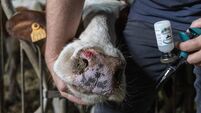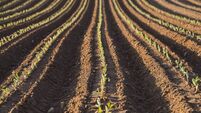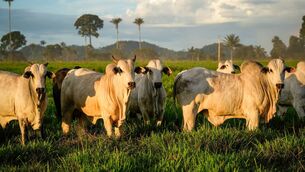Don’t miss opportunity to buy grain off the combine
The 2017 harvest has got off to a good start, with ideal harvesting conditions, .
Moistures and bushels seem to be of a high standard, meaning excellent quality feeding for the winter.
And straw has been baled in excellent condition.
It has however been a very mixed few weeks around the country with regard to grass growth, with some areas experiencing a mini-drought, and even though we got some rain over the last week, more is still needed to push on grass growth.
Second silage cuts have not yet been made on most beef farms, due to delayed first cuts.
We are now heading into August, so it will soon be time to start planning for the banking up of grass for the autumn.
It is important if you have a shortage of grass until after the second cut that you slow down the rotation and supplement with either silage or concentrates.
If you don’t identify this shortage early enough, it will mean having to supplement grass for a much longer period.
It is important that you keep applying nitrogen after grazings, to keep growth going.
There are various cereal options for beef farmers to feed over the winter.
This year is no different.
The price for cereals off the combine remains excellent value for the end user, meaning that it makes great sense to try and source and store some for the coming feeding season.
With the current beef price prospects, it is essential that production costs are controlled, without compromising on animal performance.
In plain English, you should buy top quality native cereals at good value, rather than purchase less feed and make do with lesser animal performance.
As with all recent years, we still see a scenario where native cereals are at a low price, and the feed industry continues to import grain and inferior by-products for inclusion in ruminant feeds.
The powers-that-be must do much more to encourage farm-to-farm trading of cereals, and maximum inclusion of native Irish cereals in compound feeds.
Cereals off the combine again represent fantastic value per unit of energy versus what will be available in the form of most blended feeds this winter.
Cereals will always be higher in energy during the winter than compound blends constructed on a least cost basis.
Buying wheat, barley or oats off the combine, and storing it with any of the available treatment methods, will result in a high-energy, top-quality feed being available to feed at approximately €190 per tonne.
This will help to hugely reduce total concentrate costs, by €50 to €80 per tonne, once the feed has been balanced for your stock.
If you have any notion of buying and storing grain, you should purchase it sooner rather than later.
The most cost-effective way to get grain is directly from the grower, so talk to local tillage farmers to secure your supply.
Get advice before you decide on whether to buy barley, wheat or oats.
This advice must be based on how you intend to treat the grain, the volume you will feed and what type of animals you are feeding.
Some methods offer longer storage than others, while there are also treatment methods that enhance the grain’s feed value.
Many beef producers feed high levels of cereals to finishing cattle.
Most of these are feeding young bulls to finish under 16 months.
It is critical that management in a finishing system like this is top notch.
Preventing digestive upsets is the number one priority with ad-lib diets.
An excellent method of feeding ad-lib cereals to cattle is by treating the grain with an additive that increases the pH to an alkaline level of around 9, which also enhances the protein content.
This option means that you can feed all native cereals, and eliminate lower energy imported materials.
The high pH prevents the animals from getting the acidosis normally associated with high starch feeding.
For those intending to feed 6-8 kg to steers or heifers this winter, the alkaline cereals with enhanced protein would be a complete feed to balance good quality grass silage along, with a mineral supplement.










